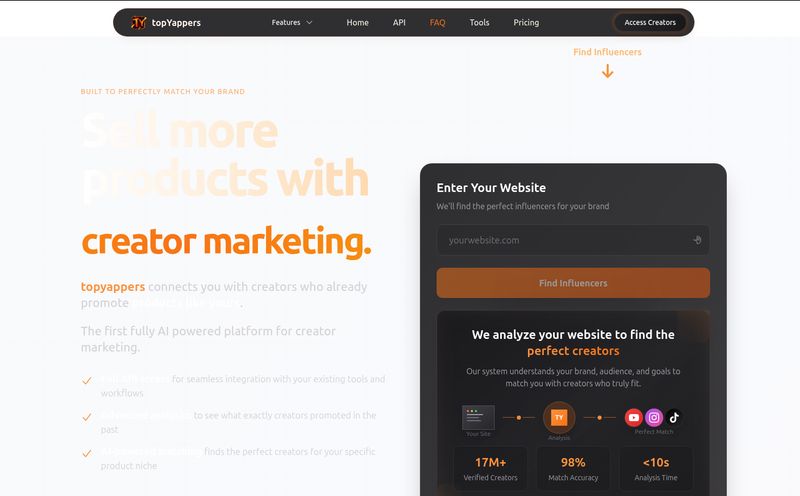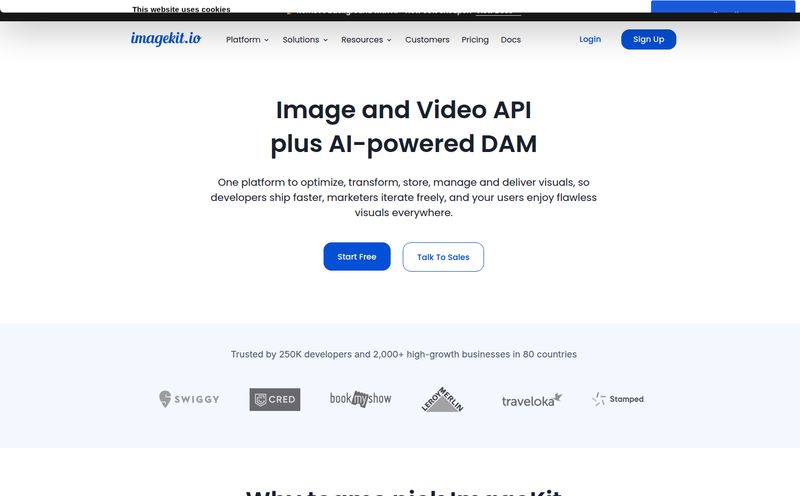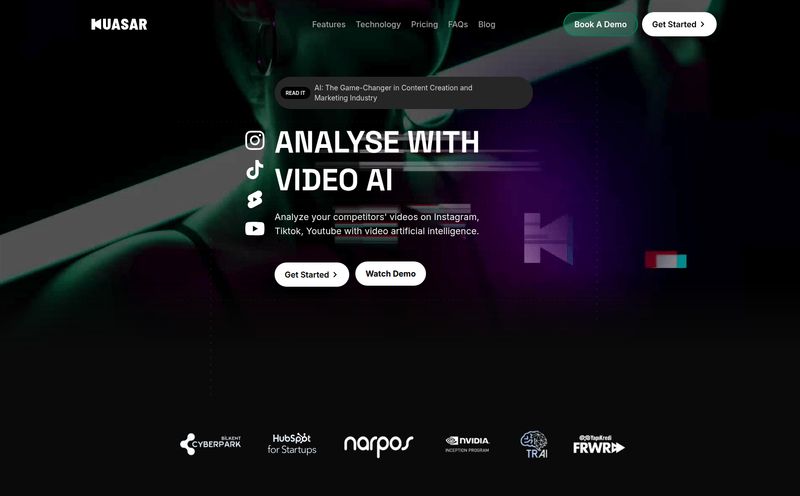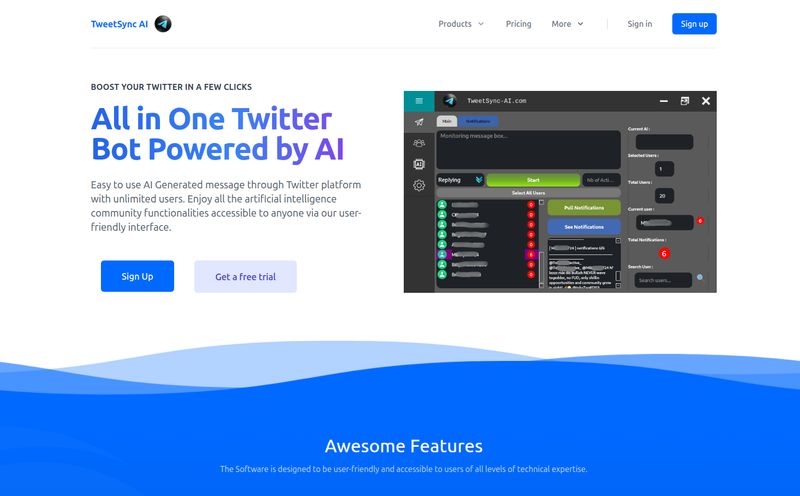The internet is still the Wild West. For every well-manicured, beautifully designed corner of the web, there's a comment section that looks like a bar fight broke out. As someone who has spent years helping brands build their presence online, I can tell you the number one fear that keeps CMOs up at night isn't a dip in CPCs; it's their beautiful, six-figure ad campaign showing up next to a video about flat-earth conspiracy theories or a comment thread that’s just… well, you know.
Brand safety isn't a new concept, but our tools for dealing with it have always felt a bit clumsy. We have blunt instruments—keyword blocklists, turning off comments entirely—that are about as subtle as using a sledgehammer to kill a fly. So, when I heard about a new platform called Parabasis, which promised something different, my curiosity was definitely piqued. They talk about automated content advisories, analyzing not just what is said, but how it's said. Intriguing.
My first move, like any good digital detective, was to check out their site. And what did I find? A big, bold "403 Forbidden" error. A classic. It's a strangely fitting, almost poetic start for a tool designed to put up barriers, don't you think? It tells me they're probably deep in development, maybe enterprise-focused, or maybe their own bouncer is just a little too aggressive. Either way, it didn’t stop me from digging in.
So, What is Parabasis, Really?
Forget the simple profanity filters of yesterday. Parabasis isn’t just a digital swear jar. The idea is to be more like the MPAA ratings (you know, G, PG, PG-13, R) but for the chaotic world of online content. It’s an AI-powered system that automatically analyzes text, audio, and even video to generate content advisories. Think of those warnings before a TV show: "The following program contains strong language and mature themes that may not be suitable for all audiences." Now, imagine that for a blog post, a podcast episode, or a user-submitted video.
The goal isn't necessarily to block or delete content outright. Instead, it's about providing context. It gives users a heads-up and advertisers a much clearer picture of the environment their brand is about to step into. It’s a shift from censorship to curation, from blocking to informing. And frankly, it's a much more grown-up way to handle the complexities of online speech.

Visit Parabasis
Beyond the Bleep Button: The Features That Matter
This is where things get interesting. Anyone can build a bot to flag the seven dirty words. The real magic in Parabasis, from what I've gathered, is in its more sophisticated analysis.
The Secret Sauce: Rhetoric and Theme Analysis
This is the feature that made me sit up straight. Parabasis claims to analyze rhetoric. This is a huge leap. We're not just talking about identifying angry words; we're talking about identifying manipulative language, persuasive techniques, and the underlying emotional tone. It's the difference between spotting a racial slur (easy for an AI) and spotting a carefully worded dog whistle designed to fly under the radar (incredibly difficult).
Think about it. A post could be 100% free of profanity but still be incredibly toxic, misleading, or just plain manipulative. It could be using appeals to fear, creating an us-vs-them narrative, or employing other persuasive tricks to push an agenda. For advertisers, this is gold. Your brand doesn’t just want to avoid profanity; it wants to avoid being associated with bad-faith arguments and toxic persuasion. This, if it works as advertised, is a game-changer for true brand safety.
The Standard Suite: Hate Speech, Profanity, and Nudity
Of course, Parabasis also covers the essentials. It has detectors for the more clear-cut issues like hate speech, profanity, and nudity. These are the table stakes for any content moderation platform today. What makes it different is that this data isn't just a simple pass/fail. It feeds into the larger advisory system. The platform doesn't just say "nudity detected." It might contribute to an overall advisory like, "This content contains artistic nudity and mature thematic elements." The context is everything.
A Flexible API for All Media
I was also happy to see that it’s not just for text. The API is built to handle text, audio, and video. In an age where a platform might host articles with comment sections, embedded videos, and a companion podcast, you need a solution that can see the whole picture. A text-only moderator is blind to the content of a podcast, but Parabasis aims to listen in, providing a consistent layer of analysis across all your content types.
The Real-World Impact for Publishers and Advertisers
Okay, so the tech is cool. But what does it actually do for a business? As an SEO and traffic guy, I see two massive benefits.
Protecting Your Brand’s Reputation (and Ad Spend)
This is the most obvious one. Brand safety is a minefield. Programmatic advertising can be brilliant for reach, but it can also be terrifyingly indiscriminate. I've seen major household brands have their ads run on some truly questionable content. Parabasis acts as an automated vetting agent. It allows advertisers to set much more nuanced rules. Instead of just blocking "politics," they could perhaps allow placement on civil political discourse but block placement on content flagged for containing "high levels of inflammatory rhetoric." That level of granularity could save millions in wasted ad spend and prevent PR nightmares.
Giving Users Control and Building Trust
This is the side of the coin people often forget. Good content moderation isn't just about protecting brands; it's about protecting the user experience. No one likes clicking a link and being blindsided by something deeply disturbing or offensive. By providing clear, upfront advisories, you give users agency. You're treating them like adults who can make their own choices. This builds trust and can actually increase engagement over the long term, as users feel safer exploring the content on your platform.
A Sober Look: The Potential Downsides
Now, I wouldn't be doing my job if I didn't put on my skeptic's hat. No tool is perfect, especially not in the messy world of AI and human language.
The "Overly Cautious Robot" Problem
The biggest challenge for Parabasis will be nuance. Their own documentation admits the rhetoric models can err on the side of caution, potentially flagging harmless content. This is the classic AI problem. It's like a smoke detector that goes off every time you make toast. Sarcasm, satire, and cultural context are notoriously difficult for algorithms to grasp. Will a heated but good-faith debate on a forum be flagged as toxic rhetoric? Will a satirical piece from The Onion be tagged as misinformation? There’s a real risk of false positives that could frustrate creators and users alike.
Let's Talk About Data
The platform stores data for up to 30 days for debugging. This is pretty standard practice for machine learning systems—they need the data to improve the models. However, for platforms dealing with highly sensitive user information, this could be a sticking point. Any time you hand your content over to a third-party API, you need to have a serious conversation about data privacy and security. It's a necessary tradeoff for the service, but one that every potential customer should be aware of.
So, What's the Price Tag?
This is the million-dollar question, isn't it? As of my writing this, there's no public pricing page (which might also explain the 403 error I ran into). This typically signals an enterprise-level, "contact us for a demo" sales model. It's unlikely to be a cheap, plug-and-play solution for a personal blogger. The target market is almost certainly larger publishers, social media platforms, and ad networks who are dealing with content moderation at scale. Expect the pricing to be customized based on API call volume and the specific features required.
How Does Parabasis Stack Up?
The content moderation space has other players, of course. Google's Perspective API is a well-known tool for scoring comment "toxicity." There are other services like Hive AI that offer broad content moderation solutions. Where Parabasis seems to be carving its niche is with this focus on rhetoric and the advisory model. While Perspective gives you a raw toxicity score (e.g., "0.87 Toxic"), Parabasis aims to give you a human-readable warning. It's less about a mathematical score and more about a qualitative assessment. It’s a subtle but important distinction. It’s trying to be a content critic, not just a content cop.
My Final Take on Parabasis
I’m cautiously optimistic. The internet desperately needs more sophisticated tools to manage the sheer volume and complexity of content. Simply blocking keywords is a losing game. The approach Parabasis is taking—analyzing persuasive language and providing context instead of just blocking—is the right way forward. It’s ambitious, and I have no doubt they will face significant challenges in training their AI to understand teh nuances of human language.
Is it a perfect solution? Of course not. But it represents a much-needed evolution in our thinking about content moderation. It moves us toward a model that values context, user agency, and true brand safety over blunt-force censorship. I'll be keeping a close eye on them… assuming they eventually let me past the front door.
Frequently Asked Questions about Parabasis
- What exactly is Parabasis?
- Parabasis is an AI-powered platform that provides automated content advisories for text, audio, and video. It analyzes content for things like hate speech, profanity, and nudity, but its key feature is the analysis of rhetoric and themes to provide TV-style warnings.
- Is Parabasis just another profanity filter?
- No, it's designed to be much more advanced. While it does detect profanity, its main focus is on analyzing persuasive language, emotional tone, and underlying themes to understand the context and potential impact of the content, not just flagging specific words.
- Who is the ideal user for Parabasis?
- The ideal users are likely medium to large-scale publishers, social media networks, online forums, and advertisers or ad networks who need to ensure brand safety and improve user experience across a large volume of content.
- How does Parabasis handle audio and video?
- It uses a flexible API that can process different media types. For audio and video, it likely uses speech-to-text technologies and visual analysis to extract the data it needs to generate a content advisory.
- Is my data safe with Parabasis?
- According to its own information, Parabasis stores content data for up to 30 days for the purpose of debugging and improving its models. Companies should review their privacy policy and consider this retention period when deciding if the service is right for them.
- How can I try Parabasis?
- Currently, there is no public information on pricing or free trials. The best approach would be to try and contact their sales or business development team directly through their website (if you can get past the 403 error!) or other channels like LinkedIn.
Reference and Sources
- Google's Perspective API - https://perspectiveapi.com/



